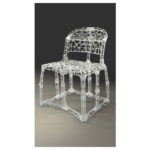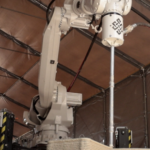
Transforming Classrooms into Innovation Hubs
3D printing is not just a novelty; it’s a vital educational tool that’s reshaping how STEM subjects are taught. In schools today, 3D printing projects are turning theory into practice, allowing students to experiment with real-world applications of their lessons. If you’re wondering why and how to learn 3D printing, read on!
Making Abstract Concepts Tangible
Consider a physics class where students design and print working gears and levers to study mechanical principles, or a chemistry class where molecular models are printed to explore complex structures.
These aren’t hypothetical scenarios — they’re happening in progressive classrooms around the world! By handling and manipulating these models, students can visualize and understand complex concepts in a way that traditional methods struggled to achieve.
Driving Creative Problem-Solving
3D printing projects for students are especially impactful. For instance, students can undertake projects like designing custom prosthetics, which combine elements of biology, engineering, and design. These projects not only challenge students to apply their knowledge but also encourage empathy and innovation by solving real human problems.

Enhancing Collaboration Skills
Group projects in 3D printing design education naturally foster teamwork as students must work together to brainstorm, design, troubleshoot, and refine their creations. This collaborative process, which can be taught even with 3D projects for elementary students, is crucial in today’s workforce, where collective problem-solving and project management are key.
Preparing for Tomorrow’s Careers
The use of 3D printing in education aligns perfectly with industry needs. From automotive to healthcare, industries are seeking professionals familiar with additive manufacturing. By introducing students to 3D printing early, we’re preparing them for future careers in these cutting-edge fields.
Customizing Learning Experiences
STEM 3D printing allows educators to tailor educational content. For example, younger students might print simple fossils or animal figures for a hands-on natural science lesson, while older students might tackle more complex 3D project ideas for high school, like building scientific models or simulating archaeological digs.
Real-World Capstone Projects
In conclusion, 3D teaching and printing have revolutionized learning by making education a dynamic, interactive, and practical experience! It’s an invaluable resource in the STEM toolkit, bringing abstract concepts to life and preparing students for future challenges in innovative ways.
In higher education, 3D printing becomes critical for capstone project writing. Engineering students, for example, might design and test load-bearing structures, applying theoretical knowledge to create practical solutions to real-world engineering problems. These 3D printing engineering education projects not only consolidate learning but also prepare students for professional challenges.
For students gearing up to showcase their culminating academic projects, turning to a professional service to write my capstone project can help refine their innovative prototypes into polished presentations, ready for the professional and academic scrutiny that awaits in their future careers!









